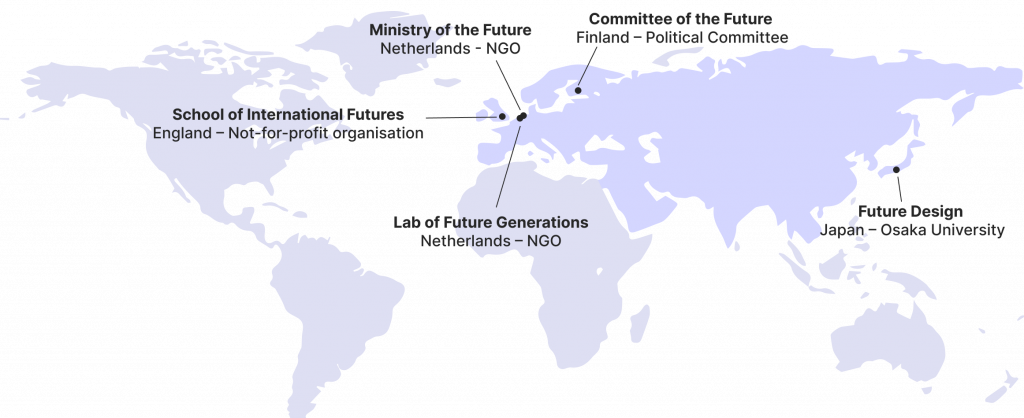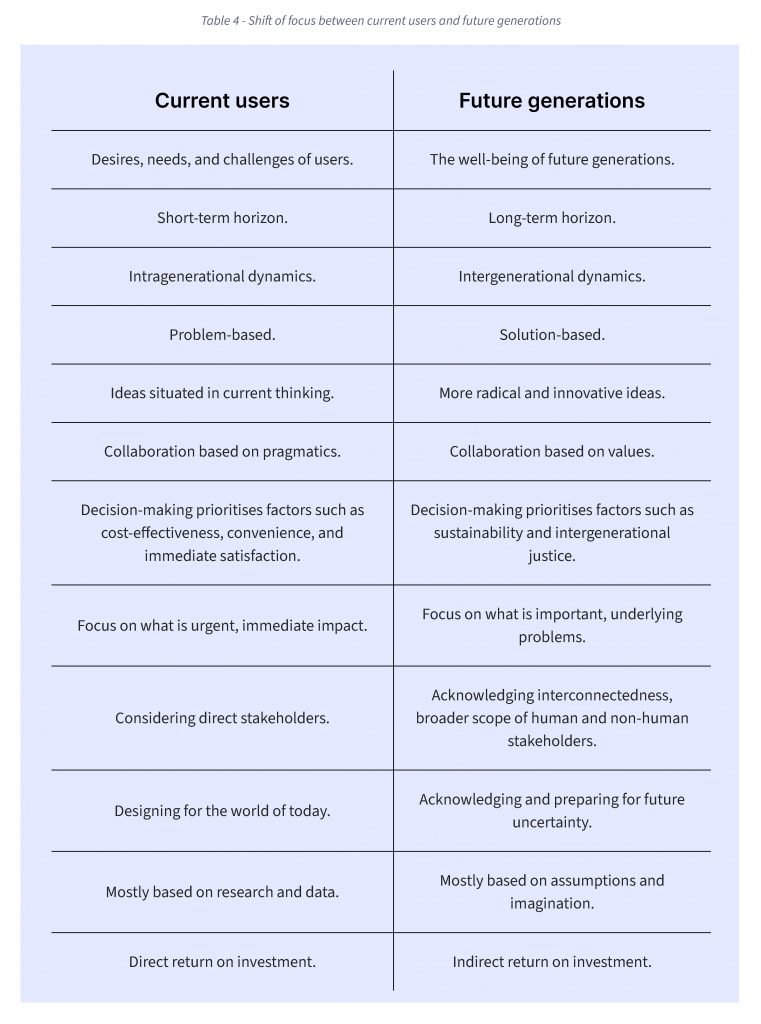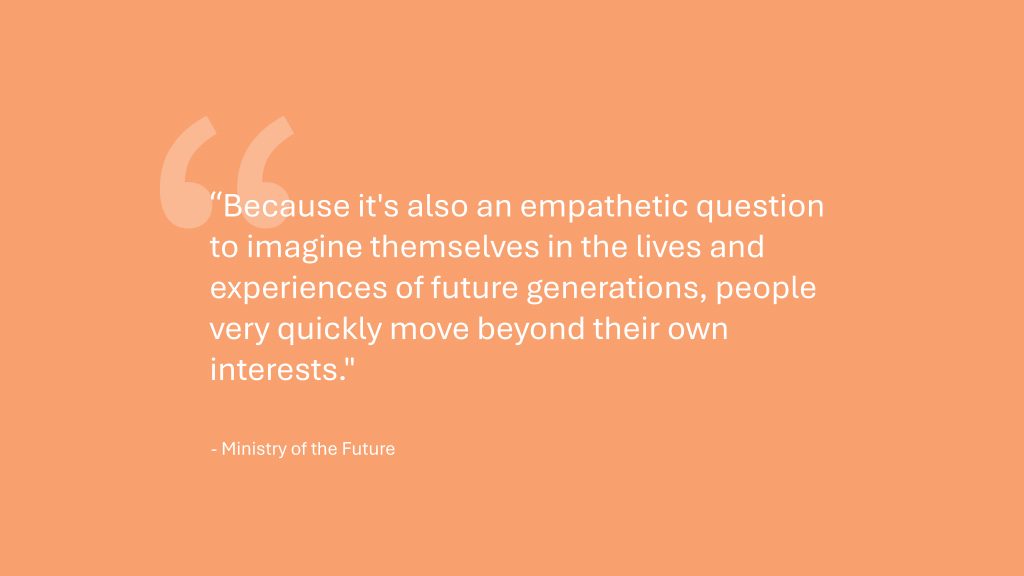Mirte van der Nat is a social designer based in the Netherlands. She works with a humanity-centred approach, grounded in research and driven by a passion for creating sustainable change. She recently completed her Master’s degree in International Business Management at Aalto University and founded the startup Navigating Stress.
As a social designer working with complex societal challenges, I became intrigued by the movement of future generations thinking, which encourages more holistic, sustainable and long-term approaches. For my master’s thesis, I explored what can be learned from this emerging field that will benefit the design sector. However, these lessons are applicable in a much broader context, as they influence decision-making on different levels from designing a new product or service to developing a company roadmap or political agenda.
For my research, I interviewed five front-runners in future-generations thinking and combined their insights with academic studies to address three crucial questions: Why, when and how should we include future generations?

Including future generations – often referred to as the unborn – makes decision-making inherently more complex. They cannot advocate for themselves, and no one person can truly represent their interests. So, before breaking our heads about the ‘when’ and ‘how’ we need to understand why we should include them in the first place.
We are all biassed towards self-interests and current circumstances in our decision-making. This ‘presentism’ leads to focus on what is urgent instead of important. As a result, long-term issues such as climate change are often neglected and not dealt with preventatively or effectively. By including the perspective of future generations we shift our focus in profound ways (see the table below). Not only do we become more aware of long-term implications and feel more motivated to make decisions that benefit both future generations and the planet, but there are also some unexpected benefits.

Three of these stand out and have made me a strong advocate for future generations thinking: it sparks creativity, democratises futures thinking and bridges divides.
Novel ideas that are not restricted by thinking as usual. Future generations’ thinking provides a fresh perspective that sparks creativity, as ideas are no longer grounded in current ways of thinking. Taking a future approach enables imagining radically new pathways for society, empowering us to actively choose and work toward the most desirable future. This shift encourages an active rather than passive approach to the future, highlighting that we do not simply have to accept how the future unfolds but that our actions today can shape the lives of future generations. As a designer generating creative ideas and solutions is the core of my work, but also for politicians and organisations the possibility to boost creativity and influence the future is undoubtedly valuable in navigating these uncertain times and fostering innovations.
Stimulate and enable engagement with futures thinking. Futures are difficult to imagine, but by connecting them to everyday human experiences, they become less abstract and more relatable. While the precise interests of future generations are difficult to identify, the core interests of leading a happy and healthy life are universal. By making the future more accessible to imagine and discuss, we can engage more people in the conversation, empowering communities to participate in future-focused decision-making.

Bringing parties with different interests together. Focusing on future generations helps diverse parties find common ground. Imagining a desirable future for all encourages people to empathise with the needs of those yet to come, prompting them to move beyond individual or organisational interests toward shared values. In several projects, this ‘future generations’ lens has successfully united seemingly opposing stakeholders, fostering a sense of shared responsibility and enabling meaningful collaboration. Additionally, creating empathy is the first step towards building compassion, which is not only the ability to feel and recognise future generations’ needs but also the desire to act in their interests. This increases the motivation to prioritise future needs, making it not just a rational choice, but also an emotional one.
To conclude, as we face increasingly complex challenges and polarised viewpoints, embracing the perspectives of those yet to come may be one of the most powerful tools we have for fostering collaboration and driving meaningful change.
Explore our Implementation Handbook for practical insights on embedding intergenerational fairness in decision-making.
